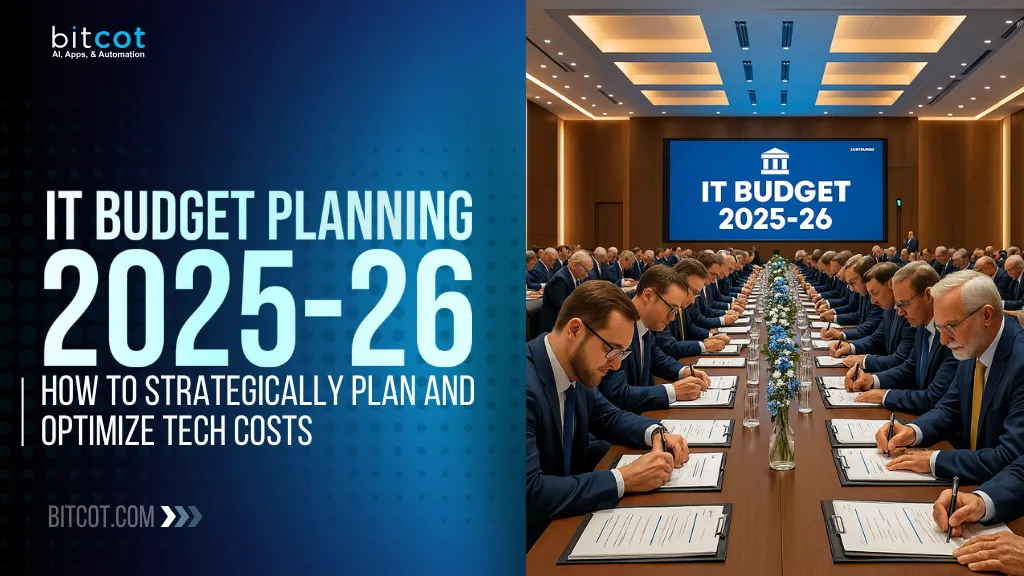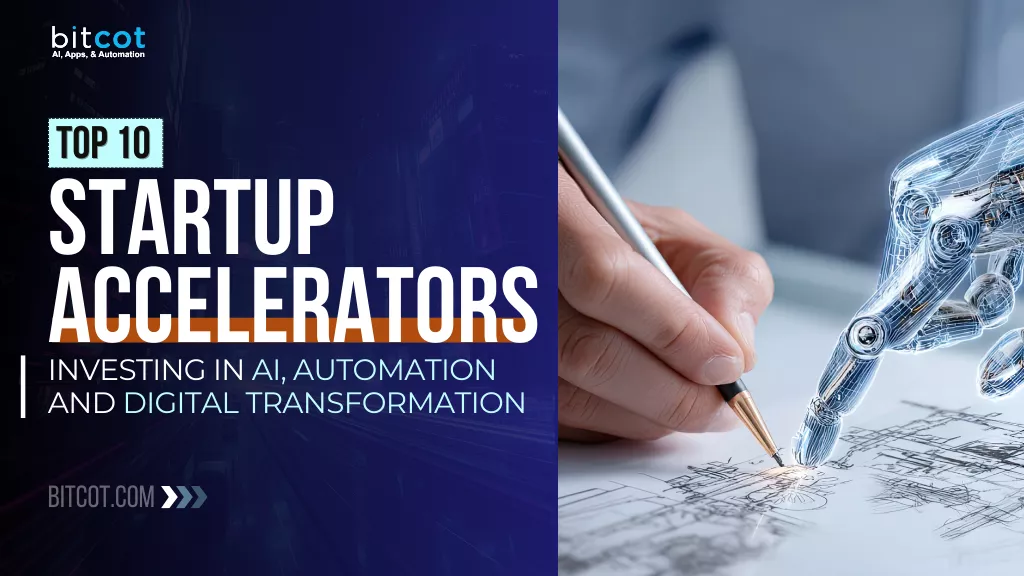
Technology is evolving faster than most companies can handle. If your IT budget doesn’t keep up, you risk falling behind while your competitors move ahead with smarter, leaner systems.
Artificial intelligence, automation, and cloud-native platforms are no longer optional. They are essential for survival and growth in today’s fast-moving digital landscape.
Too many companies are still relying on outdated infrastructure. Healthcare platforms are struggling to handle real-time patient data. Retail systems are limited by slow inventory updates and disconnected tools. Founders are spending more on fixing technical debt than building new features.
Meanwhile, the companies that are growing are doing something different. They are modernizing their IT systems, adopting AI-powered tools, and making strategic investments that create real momentum.
One of our retail clients came to us overwhelmed by outdated workflows and rising tech costs. Their backend was fragmented. Operations were slow. Teams were stuck in manual processes. We helped them reallocate their IT budget into low-code platforms, intelligent automation, and cloud-ready infrastructure. Within six months, they reduced manual work by 70 percent, launched a new mobile app, and turned IT from a bottleneck into a competitive advantage.
This is what planning smarter looks like in 2025. It is not about spending more. It is about aligning your IT investments with where your business is headed next.
Whether you are a CEO exploring how much to invest in AI-powered web and mobile app development, a CTO designing scalable infrastructure, or a founder looking to get more from every dollar, this guide will help you build an IT budget that drives long-term growth and results.
Let’s get started.
What Are the Key Tech Budget Trends for 2025-2026?
The tech budget landscape for 2025–2026 is shaped by three major trends that are redefining how organizations allocate technology investments.
First, spending on AI-optimized servers is set to double that of traditional servers, reaching $202 billion in 2025. This shift toward AI infrastructure is no longer optional. Companies that delay adoption risk falling dangerously behind.
Second, Gartner predicts a 15% rise in cybersecurity spending, with global expenditures hitting $212 billion. This isn’t optional—it’s vital protection against evolving threats that can cripple operations.
Third, software and IT services continue to lead growth. Software spending is projected to rise 14% to $1.23 trillion, reflecting a strategic shift from hardware to scalable digital solutions.
These trends bring both opportunity and pressure. Companies that align their budgets with this evolution will stay ahead. Those that don’t will struggle to compete. This moment isn’t about spending more—it’s about spending smarter.
Why Are Traditional Technology Budget Approaches Failing?
Traditional technology budgeting is collapsing under the pressure of modern business demands. Yet many organizations still rely on outdated planning methods built for a slower, more predictable era.
The biggest issue? Tech budgets are still viewed as cost centers instead of strategic investments. This mindset leads to underfunding critical areas like AI automation, cloud infrastructure, and cybersecurity—while overinvesting in legacy systems with declining value.
Here’s what happens when companies stick to outdated approaches:
Revenue Stagnation: Without modern tech investment, businesses can’t scale or respond to market changes quickly. Competitors launch innovative products while legacy systems hold others back.
Security Risks: Failing to prioritize cybersecurity leaves organizations vulnerable to breaches, regulatory fines, and reputational damage. In 2024, the average breach cost exceeded $4.45 million.
Talent Drain: Top tech talent avoids outdated systems. Companies running legacy stacks struggle to attract and retain skilled professionals.
Inefficiency: Manual processes continue draining time and resources. While competitors automate, traditional firms stay stuck in repetitive work.
The solution isn’t abandoning budget control—it’s evolving your approach to match today’s fast-moving tech cycles and strategic business priorities.
How to Assess Your Current IT Infrastructure and Costs
Before you can plan effectively for 2025–2026, you need a brutally honest assessment of your current IT infrastructure and costs. This isn’t about a surface-level audit. It’s about pinpointing where you’re losing money and missing key opportunities.
Start by breaking your technology budget into five core areas:
Infrastructure Costs: Calculate total spending on servers, storage, networking, and cloud services. Include both capital and operational expenses. Many companies overspend by 30–40% on underused resources.
Software Licensing: Audit all licenses across productivity, development, and enterprise tools. Identify redundancies, unused seats, and opportunities to consolidate vendors. Optimizing software licenses can save 15–25% of your tech budget.
Personnel Costs: Include salaries, benefits, training, and contractor fees for your IT team. Don’t forget the hidden costs of hiring and onboarding technical talent.
Security Investments: Document your cybersecurity spend—tools, services, and compliance efforts. This baseline helps determine if you’re truly protected or exposed to risk.
Development and Innovation: Track spending on new projects, R&D, and emerging technologies. This shows whether you’re investing in growth or stuck maintaining the status quo.
Next, evaluate performance and ROI in each area. Ask tough questions: Which tools are delivering value? What percentage of infrastructure is actually being used? Are you paying for features you don’t need while missing critical capabilities?
Finally, flag integration gaps and technical debt. Legacy systems that don’t play well with modern tools add hidden costs and slow your ability to scale.
What Should You Prioritize in Your 2025 Technology Budget?
Smart technology budget allocation in 2025 means prioritizing technologies that deliver immediate value while setting your organization up for long-term growth. Based on current market trends and business needs, here are the top investment areas.
AI and Automation Infrastructure should receive 25–30% of your technology budget. By 2026, over 80% of enterprises will have implemented generative AI APIs or GenAI-powered applications in production. This is not a future trend—it’s already reshaping how business gets done. Delaying AI adoption means falling behind in a market that rewards speed and innovation.
Partnering with an AI automation agency can accelerate your AI strategy without needing to build an internal team from scratch. This ensures faster implementation, lower overhead, and access to expert resources.
Cybersecurity Enhancement should account for 20–25% of your budget. With threats growing more sophisticated, this spend is non-negotiable. Prioritize advanced threat detection, staff training, and real-time response tools.
Cloud Infrastructure Optimization deserves 15–20%. This includes migrations, cloud-native development tools, and operational expenses. Well-optimized cloud systems can cut costs by 20–30% and boost scalability.
Application Development and Modernization should get 20–25%. Legacy apps are expensive to maintain and slow innovation. Investing in low-code development services accelerates delivery and reduces cost.
Data Management and Analytics should receive 10–15%. Robust data infrastructure supports AI, decision-making, and scalability. Invest in analytics platforms, warehousing, and governance frameworks.
The key is balance. Align immediate needs with strategic goals. Avoid cutting costs that weaken your competitive edge, but ensure every dollar is tied to measurable business value.
How to Plan Your Tech Budget for 2026 and Beyond?
Planning your tech budget for 2026 requires a different approach than traditional annual budgeting. The technology landscape is evolving too rapidly for static, year-long budget allocations. Instead, you need a dynamic framework that can adapt to changing business needs and emerging opportunities.
Start with a three-horizon planning model:
Horizon 1 (Immediate – 6 months): Focus on maintaining current operations while implementing quick wins. This includes infrastructure maintenance, security updates, and process improvements that deliver immediate ROI.
Horizon 2 (Strategic – 6-18 months): Invest in transformational projects that will differentiate your business. This might include enterprise application development, AI implementation, or major system upgrades.
Horizon 3 (Innovative – 12-24 months): Allocate resources for emerging technologies and experimental projects. This ensures you’re prepared for the next wave of innovation while competitors are still catching up.
Create quarterly budget reviews instead of annual ones. Technology moves too fast for yearly planning cycles. Regular reviews allow you to reallocate resources based on changing priorities and market conditions.
Implement a portfolio approach to IT investments. Balance high-certainty projects that deliver predictable returns with higher-risk, higher-reward innovations. This strategy ensures steady progress while positioning your organization for breakthrough opportunities.
Consider the total cost of ownership (TCO) for all major technology investments. Initial purchase prices often represent only 20-30% of the total cost. Factor in implementation, training, maintenance, and eventual replacement costs when making budget decisions.
Build flexibility into your budget structure. Reserve 10-15% of your technology budget for unexpected opportunities or urgent needs. This contingency fund allows you to respond quickly to market changes without derailing your strategic initiatives.
What Are the Common Technology Budget Mistakes to Avoid?
Even experienced leaders make critical technology budget mistakes that can derail digital transformation and waste valuable resources. Avoiding these common pitfalls helps you make smarter, more strategic decisions.
Underestimating Implementation Costs: Many focus on software or hardware prices, but overlook the full cost of implementation. Training, data migration, customization, and integration often cost two to three times more than the technology itself. Always budget for the full lifecycle.
Ignoring Change Management: Technology alone doesn’t deliver results—people do. Without budgeting for training, communication, and user support, adoption suffers. Allocate 15–20% of your budget to change management.
Choosing the Lowest-Cost Option: Controlling costs matters, but selecting solutions based solely on price often leads to higher expenses later. Low-cost tools may lack features, require costly customization, or offer poor support. Prioritize long-term value over short-term savings.
Neglecting Integration Needs: Today’s businesses rely on interconnected systems. Skipping integration planning leads to data silos, inefficiencies, and manual workarounds. Always factor in integration complexity.
Overlooking Scalability: Choosing tools that only meet current needs is shortsighted. As your business grows, limited systems lead to costly replacements. Select solutions with future scalability in mind.
Inadequate Security Investment: Security isn’t optional. Underfunded cybersecurity exposes your business to breaches, fines, and data loss. Bake security into every IT decision and budget.
Lack of Vendor Diversification: Relying too heavily on one vendor limits flexibility and increases risk. A diverse vendor strategy improves resilience and strengthens negotiation leverage.
Avoiding these missteps requires disciplined planning, stakeholder input, and a long-term view of how technology supports your business strategy.
How to Measure Technology Budget ROI and Success?
Measuring technology budget ROI goes beyond tracking expenses. You need to show how your investments drive real business value and competitive advantage. Without solid measurement, it’s difficult to justify spending or guide future decisions.
Start by setting baseline metrics before new implementations. Key IT ROI indicators include:
Operational Efficiency: Track time savings, automation, and productivity gains. Assign dollar values to hours saved and manual work reduced.
Revenue Impact: Measure how tech investments support growth—like increased sales, customer acquisition, or expanded market reach. This includes platforms like CRM upgrades or mobile app development.
Cost Reduction: Document savings from lower labor costs, process automation, and reduced infrastructure expenses.
Risk Mitigation: Estimate the value of avoiding security breaches, downtime, or compliance issues. These benefits, while harder to quantify, often deliver major long-term value.
Innovation Enablement: Track your ability to launch new products, enter new markets, or respond faster to competitors. Technology should be a growth driver.
Use monthly dashboards to compare spend against budget, track project progress, and monitor key KPIs. Make these accessible to leadership for clear visibility into IT performance.
Implement project-level ROI tracking for major tech initiatives. Each project should include goals, timelines, and measurable outcomes. Regular check-ins ensure alignment and accountability.
Measure both quantitative and qualitative benefits. Financial gains matter, but employee satisfaction, customer experience, and strategic agility are equally important to long-term success.
What Technologies Will Shape IT Budgets in 2026?
Looking ahead to 2026, several emerging technologies are set to reshape how organizations allocate IT budgets and prioritize innovation. Understanding these trends now helps you prepare for the next wave of digital transformation.
Generative AI Integration will dominate IT budgets. IDC projects GenAI spending to hit $202 billion, making up 32% of all AI spending by 2028. Organizations that begin building AI capabilities now—across tools, infrastructure, data, and talent—will gain a significant competitive edge.
Edge Computing Expansion will demand infrastructure upgrades. With real-time processing and low-latency needs rising, edge computing will transform data center strategies, networking, and application design.
Quantum Computing Preparation will start appearing in IT budgets. While not yet mainstream, businesses must prepare for post-quantum cryptography and explore quantum applications in optimization and simulation.
Sustainable Technology Initiatives will become essential as environmental regulations and ESG goals intensify. Budgets will shift toward energy-efficient hardware, green cloud platforms, and carbon tracking systems.
Advanced Cybersecurity Frameworks will require larger investments as threats grow more sophisticated. Expect growing adoption of zero-trust models, AI-driven threat detection, and automated response systems.
Immersive Technologies such as VR and AR will extend beyond gaming. Businesses will budget for use cases in training, collaboration, and customer experience.
Blockchain and Distributed Ledger Tech will mature, especially in supply chain, identity verification, and financial services.
The key is starting now. Early experimentation and capability-building will put your organization ahead as these technologies shift from emerging to essential.
How to Secure Executive Buy-in for Your Technology Budget?
Securing executive buy-in for your technology budget takes more than technical details. You need to speak in terms of business value, growth, and strategic advantage. Executives prioritize profitability and competitive positioning—not specs.
Start by aligning your tech budget with business goals. Every major investment should support revenue growth, cost savings, or strategic initiatives. Clearly link spending to outcomes.
Present ROI in Business Terms: Don’t focus on server specs. Explain how infrastructure cuts downtime or improves customer experience. Highlight how development platforms accelerate launches and responsiveness.
Use Competitive Analysis: Show how top competitors leverage tech for market advantage. Highlight risks of falling behind and the upside of proactive investment.
Provide Risk-Adjusted Scenarios: Present tiered investment options with potential business outcomes. This helps executives evaluate trade-offs and make informed choices.
Include Success Stories: Share real examples of IT investments that delivered business impact. This builds trust in your leadership and proposed roadmap.
Reframe Security as Continuity: Present cybersecurity as essential to operations and risk management—not just a technical checkbox.
Emphasize Strategic Positioning: Demonstrate how current investments position the company for future growth, efficiency, and market relevance.
Be Ready for Pushback: Anticipate questions on alternatives, ROI, and risk. Come prepared with data-backed answers to support your recommendations.
Executive buy-in isn’t a one-time ask—it’s an ongoing process. Keep leadership engaged with regular updates on progress, impact, and results.
How to Balance Innovation with Operational Needs?
Balancing innovation with operational needs is one of the toughest parts of tech budget planning. Overspend on operations and risk falling behind; overinvest in innovation and you may neglect the systems that keep your business running.
The solution is a portfolio approach—balancing investments based on risk and return:
Operational Excellence (50–60%): Covers infrastructure maintenance, security, monitoring, and essential services. These provide stability and predictable ROI.
Incremental Innovation (25–35%): Focus on improving existing systems—workflow automation, UX enhancements, or integrations with reliable returns.
Transformational Innovation (10–20%): Invest in high-impact areas like AI, new platform development, and emerging technologies that could reshape your business.
Create Innovation Labs: Dedicate small teams to explore new tech without disrupting core operations.
Use Staged Rollouts: Pilot and phase new initiatives to reduce risk and validate effectiveness before scaling.
Track Leading Indicators: Monitor metrics that signal whether you’re underinvesting in operations or missing innovation opportunities.
Experiment Within Operations: Test emerging tools in real use cases. This lowers risk while enhancing productivity.
The goal isn’t choosing one over the other—it’s building a tech budget that fuels today’s performance and tomorrow’s growth.
Wrapping Up
Planning your technology budget for 2025 and 2026 isn’t just about managing costs—it’s about positioning your organization for sustained success in an increasingly digital world. The companies that invest strategically in AI, cybersecurity, and modern infrastructure will dominate their markets, while those that cling to outdated approaches will struggle to survive.
The choice is yours: continue with traditional budgeting approaches and watch competitors pull ahead, or embrace the strategic framework outlined in this guide and position your organization for breakthrough growth.
Your IT budget is one of the most important strategic decisions you’ll make in the coming years. Don’t let inadequate planning hold your organization back from achieving its full potential. The time to act is now—your future success depends on the decisions you make today.
Ready to transform your tech budget from a cost center into a growth engine? Partner with Bitcot to develop a comprehensive technology strategy that delivers measurable results and positions your organization for long-term success.












